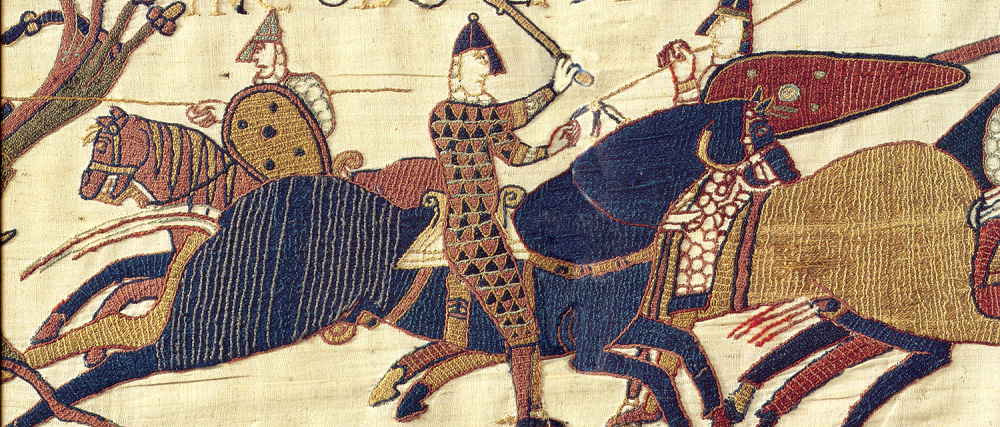The Bayeux Tapestry
Posted on 7th January 2021
The Bayeux Tapestry is an embroidered cloth depicting events leading up to the Norman Conquest of England and ending with the Battle of Hastings. It is 70 metres (230 feet) long and 50 cm (20 inches) tall.
Although it is called a tapestry, truthfully speaking it is an embroidery, linen cloth embroidered on with colourful woollen yarns. It consists of many individual panels sewn together and covers over seventy scenes.
Nobody knows for certain the origin of the Bayeux Tapestry. There is a legend in France stating that William the Conquerors wife Queen Matilda and her ladies-in-waiting commissioned and created the tapestry, however many believe it was commissioned by Bishop Odo of Bayeux (Williams half-brother) in 1070 and was probably made in England. It shows the period 1064 - 1066 from the Norman viewpoint.
The Bayeux Tapestry starts with the first panel showing Edward the Confessor sending Harold Godwinson, Earl of Wessex to Normandy.
The main body of the tapestry shows Harold Godwinson (King of England), leading the Anglo-Saxon English, and William, Duke of Normandy (Future William the Conqueror) leading a Norman army.
The last panel still in existence shows the Battle of Hastings. There is one final panel to the tapestry that is missing however it is believed that shows only one last scene.
Many of the scenes have inscriptions (tituli) woven onto them, written in Latin to describe the people and event taking place.
The Bayeux Tapestry is now on display in Bayeux Museum, Normandy France.
A Victorian replica was made by Elizabeth Wardle, wife of a leading silk industrialist Thomas Wardle. Elizabeth and other members of the Leek Embroidery Society in Staffordshire, England researched and produced a complete replica which is now on display in its entirety at Reading Museum.
Tagged as: Junior Middle Ages
Share this post:





